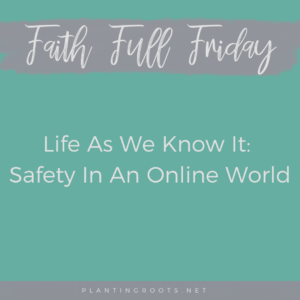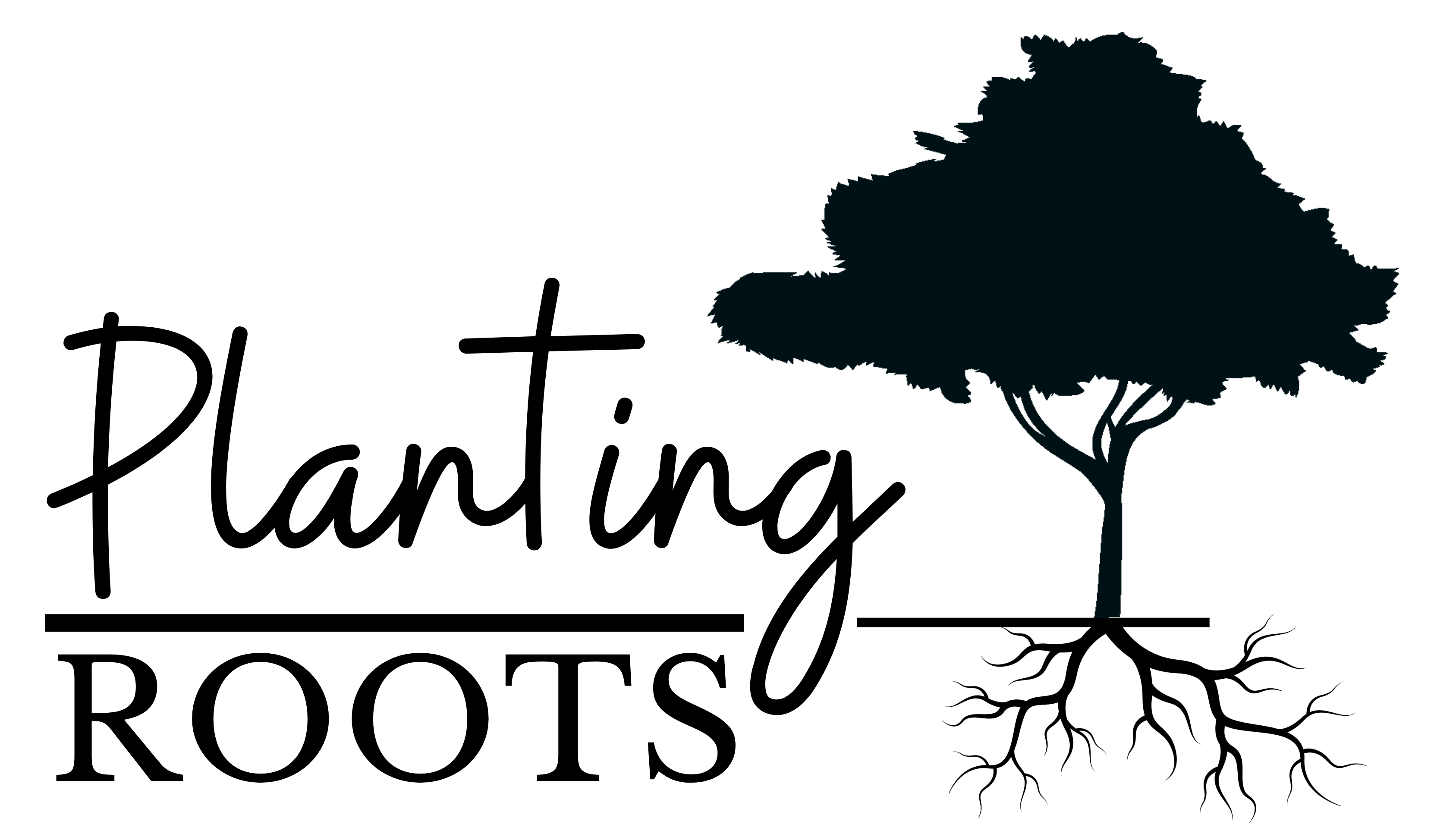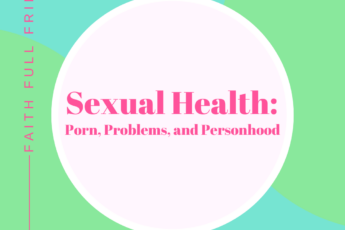Join guest writer Stephanie N. Boatman as she shares tips for life as we know it, creating safety in an online world.
Life As We Know It: Safety In An Online World
By Stephanie N. Boatman
In today’s society, the Internet or online world is likened to the United States Postal Service from two decades ago. The Internet has become our primary source of instant and constant communication; this can be a blessing and a curse.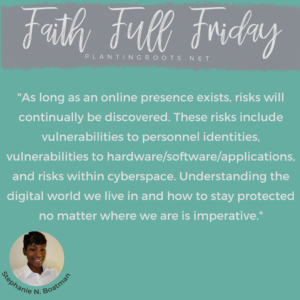
Life As We Know It
As a woman in uniform currently serving in Saudi Arabia, the internet is an excellent way to stay connected with my family, friends, church family, and professionals, no matter where I am in the world. However, Internet communication can impose many security risks that often go unknown. The risks exist partly because many terms are misused to describe “the internet”, such as www, the net, information superhighway, and cyberspace. Clear definitions are required to understand the importance of internet safety.
The Internet refers to a global network that is created by linking smaller networks of computers and servers, i.e., a network of networks. Cyberspace refers to the virtual computer world and, more specifically, an electronic medium that is used to facilitate online communication. This allows users to share information, interact, swap ideas, and engage in online discussions or social forums.
Safety Online
While serving in the military, opportunities to communicate with my family have grown exponentially due to the advent and evolution of the Internet. Early in my military career, I was not keen to know what it meant to be secure while communicating, conducting business, and transferring information over the Internet. Internet safety was not widely spoken of at the time.
In 2010 during a deployment to Afghanistan, my lack of internet safety knowledge led to identity theft when my physical presence and proximity to financial institutions were not an option. I did what most have done in haste to create passwords for many accounts. I created passwords that lacked uniqueness and individuality, leading to my accounts being compromised, money taken, additional accounts created, and ultimately locked out of everything while living in a foreign country.
Around the World
While deployed, I sat back in my office chair, lamenting the fact that I was far from family and any semblance of a brick-and-mortar financial institution. With my eyes closed, I asked the Lord for guidance. At that moment, my grandmother’s words came to mind.
Before I left, she told me always to remember Psalm 91 and seek comfort in the Lord while I was gone. Psalm 91 reminded me that security comes to the one who trusts in the Lord. The words of my grandmother, coupled with my faith, moved me to action. My frightened state of mind moved to a solution. My parents and husband acted on my behalf while I coordinated with the financial institutions to regain my identity.
In the end, I learned about security threats on the Internet and many mitigating risks that I continue to implement every time I enter the gateway of cyberspace. This is important for protecting my identity and digital footprint as I communicate with family, friends, and church family and conduct business within my profession.
Closing the Online Knowledge Gap
The simple yet powerful terms can help close the knowledge gap when added to one’s cyber and Internet security vocabulary tool bag.
Online Threats: the most common type of cybersecurity risk. They come from people who seek to attack your computer or steal your information.
Cybersecurity: the practice of protecting critical systems and sensitive information from digital attacks.
Internet Security: the practice of implementing security measures to ensure the security of online transactions, which includes browser, network, operating systems, and application security.
Data Theft: the most common type of cyber threat, which describes stealing specific information like customer data, intellectual property, and trade secrets.
Personal Security (PERSEC): the process of keeping your and your family’s personal information secured.
Closing the knowledge gap and understanding these informational terms help us navigate how to communicate, conduct business, and transform how we live in the online world. Coupled with the implementation of mitigation factors, our online experiences are safer.
Mitigating Risks Online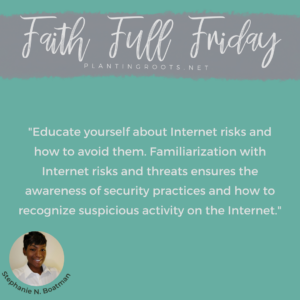
Below are many tips and ways to mitigate risks that lead to a safer online experience. I live by these tips and ensure that my children understand the importance of Internet safety as they are introduced to the world of digital communication as we know it. Some general tips on mitigating Internet risk include:
- Educate yourself about Internet risks and how to avoid them. Familiarization with Internet risks and threats ensures the awareness of security practices and how to recognize suspicious activity on the Internet.
- Use strong passwords and keep them safeguarded. Ensure all passwords are unique, at least 8-12 characters, and encompass a combination of upper letters, numbers, and special characters.
- Never send passwords by email, instant message, or any other means of communication that is not reliably secure.
- Install anti-virus software and firewall protection on your computer. These security tools can help identify and prevent malicious activity on your profile and computer.
- Change the default Service Set Identifier (SSID) and default Wi-Fi password on your home Internet connection. This will add a layer of individualized security to your home wireless network and keep your data safe from unauthorized personnel.
So What?
As long as an online presence exists, risks will continually be discovered. These risks include vulnerabilities to personnel identities, vulnerabilities to hardware/software/applications, and risks within cyberspace. Understanding the digital world we live in and how to stay protected no matter where we are is imperative. As a believer, knowing that no matter the situation, God is in control helps us as we continue to live in this world of expansion, transformation, and evolution.
Closing Prayer
Father God, thank you for the opportunity to be a shining light within your magnificent creation. Life as we know it may seem daunting, from physical presence to online presence. But with you, all things are possible. You will go before us and be with us; you will never leave nor forsake us (Deuteronomy 31:8). Because of this, we do not have to be afraid nor discouraged within our daily walk in life. As we continue within this world and traverse cyberspace, please lead and guide us to make safe and sound decisions that we will be happy with later. In your son’s name, Amen.
About the Author
Stephanie is a loving wife, devoted mother, daughter, and sister whose foundation is built on Christian principles. She is a proud Army Officer with over 17 years of experience and currently serves in Saudi Arabia. She serves her community through teaching, volunteer opportunities, and charitable events. Stephanie holds a Bachelor of Arts in Mathematics from Lafayette College. She has a Master of Science in Information Management from Syracuse University. She is a member of the CompTIA certification community and the Armed Forces Communications & Electronics Association.
Bibliography
- Read our Faith Full Friday series here.
- If you have any questions or want to know more about these topics, contact us via email or social media!
- Read what is Cyberspace here
- Read the difference between Cyberspace and The Internet here
- Read about the protection of home and Internet security here
